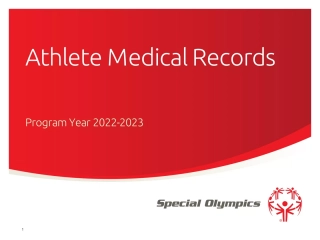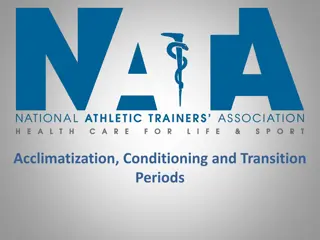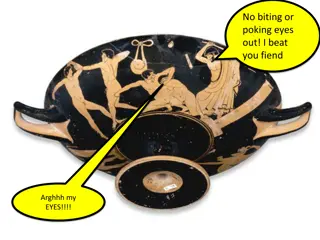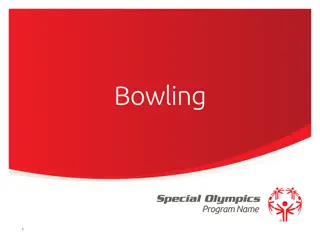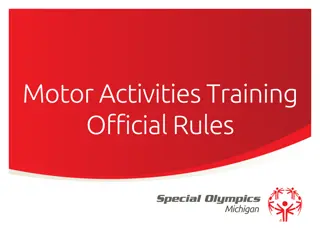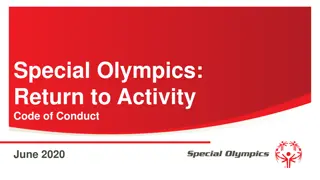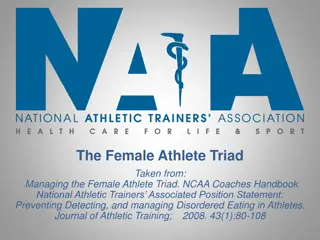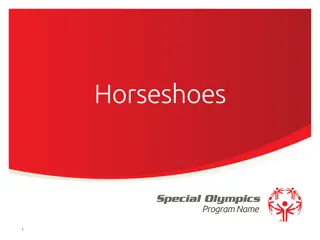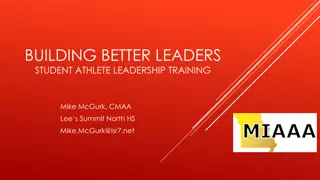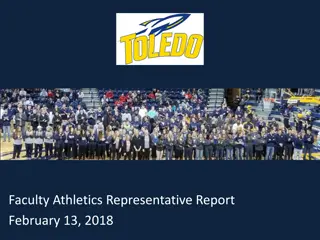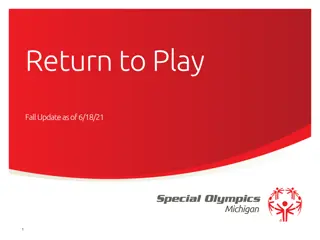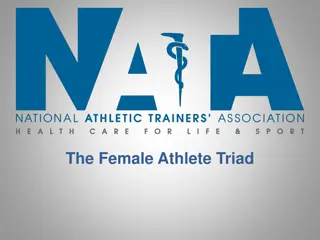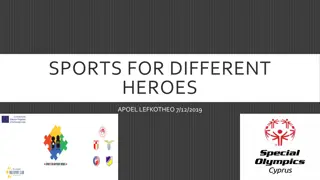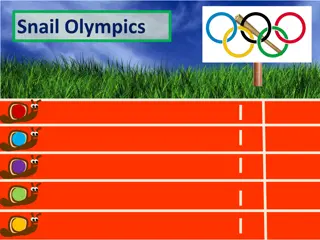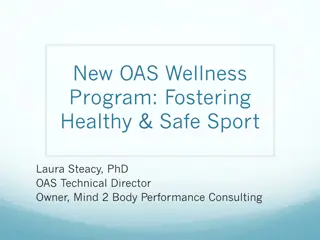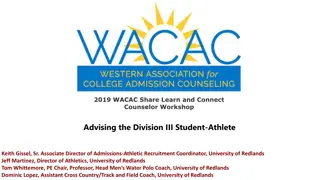Empowering Athletes: The Role of Athlete Representatives in Special Olympics Leadership
Athlete Representatives play a crucial role in driving the work of Special Olympics by ensuring athlete representation on leadership groups. They provide valuable perspective, set policy, introduce new ideas, and implement improvements. Athlete Leaders can serve on councils, boards, and committees, contributing to decision-making and organizational direction. Training programs equip them with essential leadership skills to excel in their roles.
Download Presentation

Please find below an Image/Link to download the presentation.
The content on the website is provided AS IS for your information and personal use only. It may not be sold, licensed, or shared on other websites without obtaining consent from the author. Download presentation by click this link. If you encounter any issues during the download, it is possible that the publisher has removed the file from their server.
E N D
Presentation Transcript
Athlete Representative Overview ATHLETE LEADERSHIP June 2021
Athlete Representative Overview Why? Athletes need to drive Special Olympics work. To achieve this, there needs to be athlete representation on all leadership groups. To become an athlete led organization, athletes must lead the work and participate in the decision-making process and implementation. Athlete Representatives can fulfil that role. What? Athlete Representatives are athletes who provide perspective and opinions on behalf of other athletes. They help set policy, make recommendations for continuous improvement, introduce new ideas, and then, when appropriate, implement those new ideas to improve local programming. Athlete Representatives: Represent Special Olympics professionally. Understand the mission and goals of the organization they serve. Are connectors, committed to expressing opinions and gathering or sharing feedback of other athletes.
Leadership Roles Here are 3 examples of roles for Athlete Representative: Athlete Leadership Council* The Athlete Leadership Council is a group of athletes that represent the interests of all athletes in their Program. They voice their opinions about important issues related to Special Olympics and provide support and leadership to all programmatic areas at a local, national, regional or global level. *Previously referred to as Athlete Input Council Serving on Program Board of Directors All Special Olympics Board of Directors must include at least one current Special Olympics athlete. The athlete serving on the board: Must have the same rights and privileges as other voting Board members Play an integral role Set organization direction Monitor annual and strategic direction Meet periodically to discuss and vote on organizational matters Participating on Committees The purpose of a committee is to solve problems, plan events, develop budgets, and so much more. Really, they can do just about anything when they work together, and everyone contributes. Here, athletes must: Manage a specific topic or issue. Address issues or problems and make recommendations for solutions. Meet regularly to complete tasks. Examples of Special Olympics Committees: Athlete Leadership Committee Transportation Committee Opening Ceremonies Committee Family Committee Volunteer Recruitment Committee Policies & Procedures Committee Fundraising Event Committee LETR Committee
Training The purpose of the Athlete Representative training course is to: Train athlete leaders in leadership skills that allow them to participate effectively as Athlete Representatives. Describe the Athlete Representative roles available in Special Olympics and review expectations and leadership opportunities for athletes. Description Topic Est Time Lesson 1: Preparing for Meetings Before the meeting During the meeting After the meeting Ensure you are prepared for the meeting. Learn the steps you should take to have a successful meeting and meet or exceed expectations. 45 mins Lesson 2: Meeting Management Tips for leading meetings Group dynamics in meetings Not all meetings flow the same way, even if it is the same group of people. Learn and practice some skills to guarantee a productive meeting. 45 mins Lesson 3: Athletic Leadership Council (ALC) ALC explained Structure, roles, and responsibilities This is a more specific discussion on what an ALC does and how it functions. This course also covers some suggestions to increase effectiveness of this group. 90 mins Lesson 4: Preparing Committees & Boards of Directors Athletes serving on committees explained Athletes serving on boards explained Members, roles, and responsibilities Ensure you are prepared for the meeting. Learn the steps you should take to have a successful meeting and meet or exceed expectations. 60 mins We encourage you to complement this training course with the following Advanced Leadership Courses: Leadership Discussions, 60 mins
Delivery Method You can use these resources to offer the training in whatever way works best for you virtually or in person. The workbook is designed to be used by the participants during the sessions. The facilitator guide is to assist staff in facilitating a discussion via virtual webinar. The PowerPoint slides are to be used as a visual during the discussion. Resources Pathway to Athlete Representative Athlete Representative facilitator guide Workbook PowerPoint slides You can access all Athlete Representative Training resources here. https://www.dropbox.com/sh/9cmvbvw9ps1yx22/AABTdLou3vuaVzPSGnVk8CtFa?dl=0


